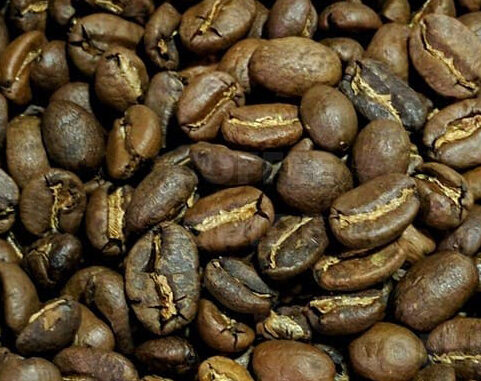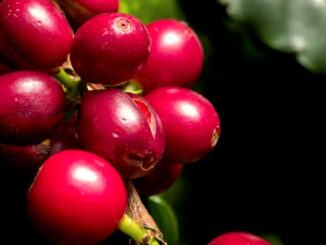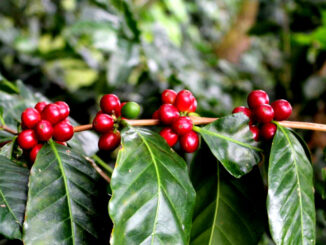
Harrar coffee (also spelled Harar) is one of the most legendary and distinctive Arabica varieties from Ethiopia.
Known for its rich body, fruity sweetness, and wine-like flavor, Harrar coffee offers a sensory experience unlike any other.
It’s grown in the eastern highlands of Ethiopia, where the dry climate and traditional natural processing give it its signature intensity and complexity.
🌍 Origin and Background
Harrar coffee comes from the Harari region in eastern Ethiopia, one of the oldest coffee-growing areas in the world.
The region’s history with coffee stretches back centuries, and it is often linked to the earliest days of Ethiopia’s coffee trade.
Unlike the wetter regions of Sidamo and Yirgacheffe, Harrar’s semi-arid climate produces coffees that are naturally processed, resulting in bold, fruit-forward flavors.
The beans are grown by smallholder farmers — often on family plots — and dried in the sun using traditional methods that have changed little over generations.
🌿 Growing Conditions
Harrar’s high altitude and dry climate give its coffee a unique profile distinct from other Ethiopian varieties.
Typical growing conditions:
- Altitude: 1,400–2,000 meters above sea level
- Temperature: 18–25°C (64–77°F)
- Rainfall: Low to moderate, with long dry seasons
- Soil: Sandy and well-drained
- Processing: Almost exclusively natural (dry-processed)
Because Harrar is a dry region, the natural process is ideal — the coffee cherries dry whole in the sun, absorbing the fruit’s natural sugars and creating deep, winey flavors.
🫘 Coffee Varieties
Harrar coffee is primarily composed of Ethiopian heirloom Arabica varieties, many of which are indigenous to the Harari highlands.
Common local strains include:
- Longberry: Large beans with rich, complex flavor and strong aroma.
- Shortberry: Smaller beans known for sweetness and balance.
- Mocha Harrar: Beans with pronounced chocolate and berry tones.
These traditional cultivars contribute to Harrar’s intense fruit and chocolate notes, making it one of Ethiopia’s most exotic coffees.
☕ Flavor Profile
Harrar coffee is famous for its bold, full-bodied flavor and distinct fruity aroma.
It is often described as wine-like, with a blueberry and chocolate sweetness that lingers beautifully.
Typical tasting notes include:
- Blueberry, blackberry, or raisin fruitiness
- Dark chocolate and cocoa undertones
- Wine-like aroma with hints of spice
- Medium to full body
- Low to medium acidity
- Long, syrupy finish
Harrar’s naturally processed beans give the cup a complex, jammy depth, making it a favorite among espresso drinkers and lovers of strong, flavorful coffee.
🌾 Processing Method
Harrar coffee is almost always naturally processed (dry-processed) — one of the oldest and most traditional coffee methods in the world.
The process includes:
- Hand-picking ripe cherries.
- Sun-drying the whole fruit on raised beds or patios for up to three weeks.
- Hulling the dried cherries to remove the outer layers.
- Sorting by hand to ensure quality.
This natural process enhances sweetness, body, and fruit intensity, resulting in Harrar’s characteristic rich and syrupy flavor.
🌏 Subregions and Microclimates
The Harrar region has several subregions, each contributing subtle differences to the coffee’s taste:
- Eastern Harrar: Known for strong fruit and wine-like acidity.
- Western Harrar: Softer and more chocolate-toned.
- Babile and Diredawa areas: Balanced sweetness with mild spice notes.
These microclimates add diversity to Harrar coffee, making each lot slightly unique.
☕ Brewing Recommendations
Harrar coffee’s bold, fruit-forward character makes it ideal for brewing methods that highlight sweetness and body.
Recommended brewing methods:
- Espresso: Brings out rich blueberry and chocolate tones.
- French Press: Enhances body and mouthfeel.
- Pour-over: Highlights berry brightness with a cleaner finish.
- Cold brew: Smooth and naturally sweet, with a syrupy texture.
Use medium to dark roast and water at around 93°C (199°F) to bring out its full potential.
🌱 Sustainability and Traditional Farming
Harrar coffee is grown by small-scale farmers who rely on traditional, organic practices.
Most cultivation takes place without modern machinery or chemicals, maintaining both quality and sustainability.
Sustainable features include:
- Hand-picking and natural sun-drying.
- Shade-grown coffee protecting soil and wildlife.
- Use of organic compost and natural fertilizers.
- Family-based production supporting local communities.
This traditional, eco-friendly approach gives Harrar coffee its authentic and earthy character.
❤️ Final Thoughts
The Harrar coffee variety from Ethiopia is a true original — bold, fruity, and deeply flavorful.
Its wine-like aroma, berry sweetness, and chocolatey richness make it one of the most distinctive coffees in the world.
Each cup tells the story of centuries-old traditions, handcrafted farming, and Ethiopia’s deep connection to coffee culture.
☕ Harrar coffee — wild, bold, and beautifully Ethiopian.
DeliciousPath: Enjoyment in Every Moment
Explore the Gourmet on Board category for exquisite flavors that elevate your meals, even when you’re on a boat, and the Coffee category for aromatic coffee blends that make every moment special. DeliciousPath is here to turn every experience into something unforgettable!

























